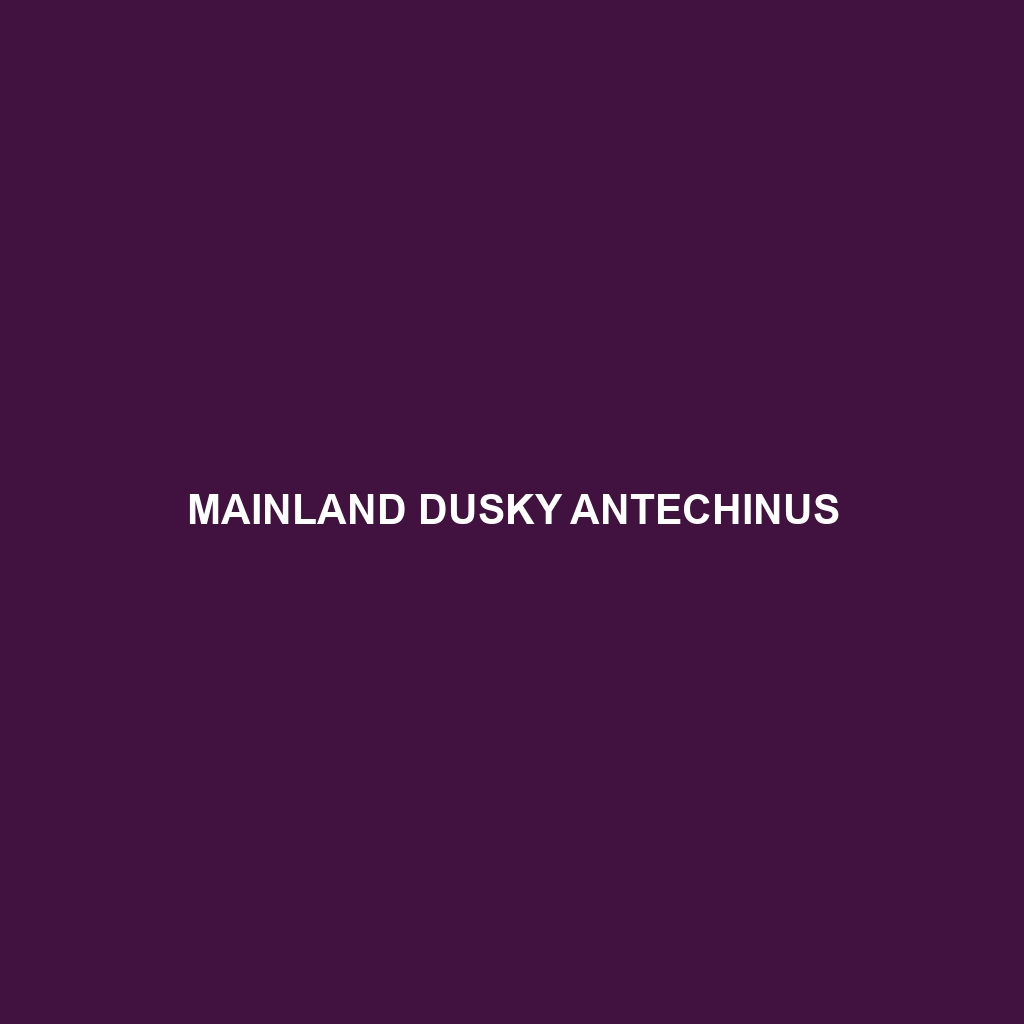Swamp Antechinus (Antechinus minimus) Detailed Description
:
The Swamp Antechinus (Antechinus minimus) is a small, insectivorous marsupial native to the swampy and forested regions of southeastern Australia, including Tasmania. Known for their high-energy lifestyle and remarkable reproductive behaviors, these agile mammals play a vital role in their ecosystem. Despite their small size, Swamp Antechinus are tough survivors in the wild, with unique adaptations suited for their wetland habitats.
Physical Characteristics:
Size: The Swamp Antechinus is relatively small, with adults typically measuring around 9-14 cm (3.5-5.5 inches) in body length, plus a tail length of about 7-10 cm (2.8-4 inches).
Weight: They weigh between 20-45 grams (0.7-1.6 ounces), depending on their sex and age.
Coloration: These marsupials exhibit a dense, soft fur that is generally greyish-brown on the dorsal side and lighter, often whitish or cream-colored on the ventral side.
Special Features: The Swamp Antechinus has a pointed snout and sharp teeth designed for an insectivorous diet. Their hind feet are equipped with elongated toes and claws that facilitate climbing and foraging.
Behavior:
Social Interactions: Swamp Antechinus are primarily solitary animals, coming together primarily during the breeding season. They are known for their intense breeding periods during which males experience a fatal reproductive strategy, often dying shortly after mating due to stress and physical exhaustion.
Feeding Habits: They are primarily insectivorous, feeding on a diet of insects, spiders, and other small invertebrates. They are adept foragers, using their keen sense of smell to locate prey.
Ecological Roles: As insectivores, Swamp Antechinus help control insect populations, thus maintaining a balance within their ecosystem. They also serve as prey for larger predators, contributing to the food web dynamics.
Habitat:
Geographical Range: Swamp Antechinus are found in the wetlands, heathlands, and forested areas of southeastern Australia and Tasmania.
Preferred Environment: They thrive in moist, dense vegetation where they can find ample food and shelter. Common habitats include swamps, wet sclerophyll forests, and coastal heathlands.
Adaptations:
Behavioral Adaptations: These marsupials are primarily nocturnal, allowing them to avoid many daytime predators and forage in cooler temperatures.
Physical Adaptations: Their dense fur provides insulation against cold, wet conditions. Their sharp claws and strong limbs make climbing and digging efficient, aiding in foraging and nest-building.
Reproductive Adaptations: The males’ short-lived, yet intense, reproductive period ensures maximum genetic dissemination at the cost of their own longevity.
Conservation Status:
Threats: The primary threats to the Swamp Antechinus include habitat destruction due to agriculture, urban development, and climate change. Predation by introduced species such as cats and foxes also poses significant risks.
Conservation Efforts: Conservation measures focus on habitat protection and management, as well as controlling invasive species. The Swamp Antechinus is listed as ‘Near Threatened’ on the IUCN Red List, highlighting the need for ongoing conservation efforts.
Fun Facts:
The Swamp Antechinus is one of the few mammals with a semelparous reproductive strategy, meaning males often die after a single, intense mating season.
Despite their name, Swamp Antechinus are not restricted to swamps and can thrive in various wetland and forested habitats.
They possess a remarkable ability to enter torpor, a state of reduced metabolic rate, to conserve energy during periods of food scarcity or harsh weather conditions.
By understanding the Swamp Antechinus’ unique characteristics and behaviors, we can better appreciate the richness of biodiversity within their habitats and the importance of conserving these remarkable creatures.

